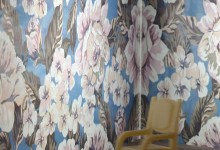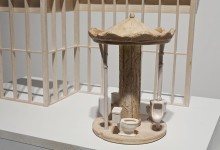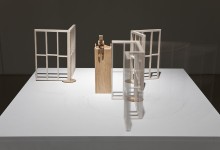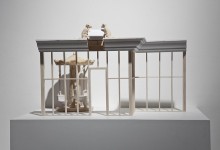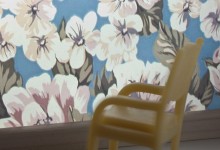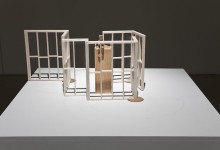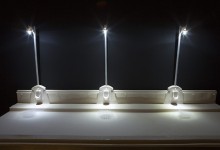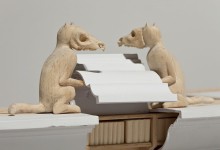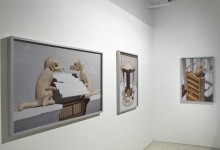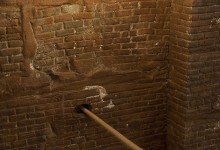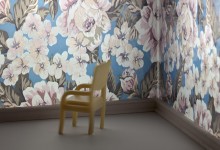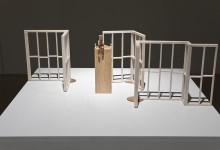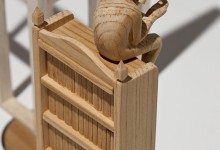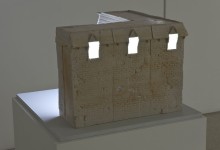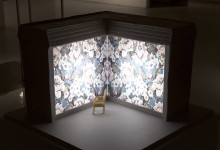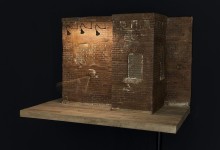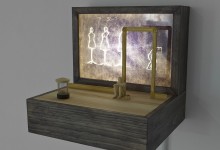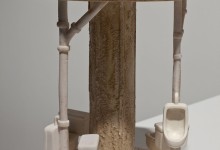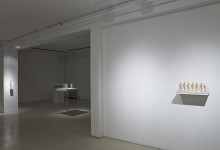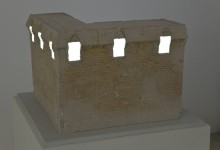Guillaume Lachapelle: En pure perte
Text by Jaynus O’Donnell
Manipulating mechanisms and materials such as wood, electric engines, resin, metal, glass and light, Guillaume Lachapelle creates fantastical yet familiar miniature worlds. Skillfully utilizing these concoctions of material and technology, the artist generates tiny architectural realms that speak of physical and psychological conditions. It is implied that these conditions are potentially generated by our relationships with urban environments, and specifically, with the physical structure or ‘stuff’ of these environments. Urinals and toilets, furniture, half-finished buildings and façades combined with dramatic lighting, subdued colour and implied (or literal) action in the scenes express a dream-like existence, where movements are repetitive and night is long, if not everlasting.
The works are structurally sparse and their narratives vague, producing room for viewer intervention. This physical and psychological spaciousness seems to almost conflict with the minute scale of the works, but, in actuality, it creates an openness and unfinished feeling that enables the viewer to place themselves directly within the action (or implied action) of the scenes. Becoming a part of the artwork in this way may enable audiences to empathize with the creatures and anthropomorphized objects present in the miniatures. And even more interesting, is the potential for multiple narrative completions carried out by different viewers. There are many stories to be found in these worlds. Lachapelle seems aware that the ambiguity created through fragmentation and spaciousness coupled with unusual action allows for viewer controlled interpretive threads to emanate beyond the immediate temporal surroundings of the artworks. Eventually, in addition to Lachapelle’s original intention, the artworks become imbued with the natures, desires, fears and hopes of their onlookers.
The combination of the familiar with the unfamiliar begs the viewer to be both attracted to and confused or curious about the miniatures, a combination of states which prompts further intellectual involvement in a piece of art. For myself, Lachapelle’s work prompted questions about isolation and decomposition in urban environments. I wondered about the happenings of night, about what we don’t often see in cities, about rooftops and abandon buildings and the skeleton of the city. The work made me question my own position within the city. What the urban atmosphere looks like and how we are able to or manage to navigate it seem important contributors to our collective and individual psychological, perhaps unconscious, states. Viewing Lachapelle’s work and placing myself within his frame provoked me to see the unusual in the commonplace during my travels throughout the urban landscape.


